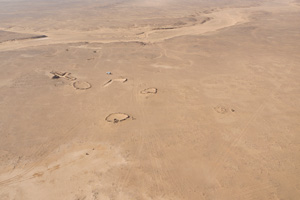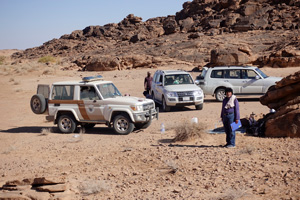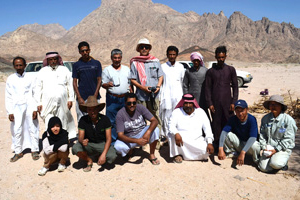The focal points of our discussion are the social organization of pre- and proto-historic local nomads and its diachronic and synchronic change during the key five millennia. The investigation approaches the issues from multiple perspectives including palaeo-environment and climatic changes, burial practice and social organization of local nomads and their diachronic/synchronic transition, migration pattern of nomadic tribes viewed from production and circulation of prestige goods and wool-shearing flint tools (i.e. tabular scrapers), appearance and expansion of rock-engraved tribe signs (i.e. wasm), history of water-use technology, osteological and genetic characteristics of tribesmen and their livestock, and structure and history of corrals. In addition, with a view to exploring the relationship between the internal structure of a cemetery and the social organization behind it, the investigation also plans sociological and anthropological studies of cemeteries of modern nomadic tribes.










